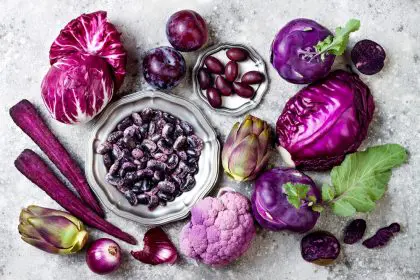The concept of “clean eating” has evolved from a trendy catchphrase to a practical approach for improving nutrition without extreme restrictions. At its core, clean eating focuses on consuming whole, minimally processed foods while reducing refined sugars, unhealthy fats, and artificial ingredients.
This simplified 7-day meal plan eliminates the confusion and complexity often associated with dietary changes. Each day features accessible ingredients, straightforward preparations, and balanced nutrition to make healthy eating sustainable rather than punishing.
Unlike restrictive diets that eliminate entire food groups or require specialized ingredients, this approach emphasizes nutrient-dense whole foods while allowing flexibility for individual preferences and lifestyle demands. The result is a practical framework for better nutrition that can be maintained long-term.
What defines clean eating in 2025
The clean eating philosophy has matured beyond its sometimes rigid origins to embrace a more balanced approach to food selection. Today’s clean eating emphasizes:
- Prioritizing whole foods in their natural state—vegetables, fruits, lean proteins, whole grains, and healthy fats
- Minimizing heavily processed foods containing artificial preservatives, colors, and flavors
- Reducing added sugars and refined carbohydrates
- Choosing quality proteins from responsibly sourced animal and plant options
- Incorporating healthy fats while limiting trans fats and excessive saturated fats
This approach allows for occasional indulgences and practical compromises rather than demanding perfection. The focus shifts from restriction to abundance—filling your plate with nutritious whole foods leaves less room for less beneficial options without requiring rigid rules or deprivation.
7-day clean eating meal plan
This week-long plan provides a practical framework for incorporating clean eating principles into everyday life. Each day includes three main meals plus two snack options to maintain energy and satisfaction throughout the day.
Day 1: Reset day
Breakfast: Overnight oats with unsweetened almond milk, chia seeds, cinnamon, and fresh berries Lunch: Mediterranean bowl with quinoa, cucumber, cherry tomatoes, kalamata olives, chickpeas, and lemon-tahini dressing Dinner: Baked salmon with roasted sweet potatoes and steamed broccoli Snack options: Apple with almond butter or celery sticks with hummus
Day 1 establishes the clean eating foundation with fiber-rich whole grains, plant proteins, omega-3 fatty acids from salmon, and naturally sweet fruits. The Mediterranean bowl provides a complete protein through the combination of quinoa and chickpeas, while the overnight oats offer convenience for busy mornings.
Day 2: Energizing day
Breakfast: Green smoothie with spinach, banana, unsweetened Greek yogurt, ground flaxseed, and a touch of honey Lunch: Turkey and avocado wrap with collard green leaves instead of tortilla, filled with sliced turkey, avocado, grated carrots, and mustard Dinner: One-pan chicken thighs with roasted Brussels sprouts, red onion, and butternut squash Snack options: Small handful of walnuts and blueberries or bell pepper strips with guacamole
Day 2 focuses on nutrient-dense meals that provide sustained energy. The green smoothie delivers probiotics from yogurt alongside leafy greens, while the collard wrap offers a grain-free alternative that increases vegetable intake. The one-pan dinner simplifies cooking while delivering a balanced meal.
Day 3: Plant-powered day
Breakfast: Savory breakfast bowl with two soft-boiled eggs, sautéed kale, avocado slices, and cherry tomatoes Lunch: Lentil soup with carrots, celery, onions, garlic, and spinach, served with a side of whole grain crackers Dinner: Stuffed bell peppers with a mixture of brown rice, black beans, corn, diced tomatoes, and Mexican spices Snack options: Greek yogurt with cinnamon and berries or cucumber rounds topped with tuna salad
Day 3 highlights plant-based proteins while maintaining balanced nutrition. The lentil soup provides fiber and plant protein, while the stuffed peppers deliver a complete protein through the rice and bean combination. Even the breakfast emphasizes vegetables alongside the eggs for a produce-forward start.
Day 4: Metabolism boost day
Breakfast: Protein pancakes made with oat flour, banana, eggs, and a scoop of plant-based protein powder, topped with fresh fruit Lunch: Large salad with mixed greens, grilled chicken, strawberries, avocado, pumpkin seeds, and olive oil vinaigrette Dinner: Zucchini noodles with turkey bolognese sauce (ground turkey, diced carrots, celery, onions, and tomato sauce) Snack options: Hard-boiled egg with everything bagel seasoning or apple slices with cinnamon
Day 4 incorporates protein with each meal to support metabolism and muscle maintenance. The protein pancakes offer a cleaner version of a breakfast favorite, while the zucchini noodles provide a vegetable-based alternative to refined pasta. The mixed salad delivers antioxidants alongside satisfying protein and healthy fats.
Day 5: Anti-inflammatory focus
Breakfast: Turmeric-ginger smoothie bowl with frozen mango, banana, coconut milk, turmeric, ginger, and topped with hemp seeds and coconut flakes Lunch: Salmon salad (canned salmon, Greek yogurt, dill, lemon) in lettuce cups with sliced cucumber Dinner: Sheet pan dinner with herb-roasted chicken breast, rainbow carrots, and asparagus Snack options: Berries with unsweetened coconut yogurt or celery with almond butter
Day 5 emphasizes foods with anti-inflammatory properties. The turmeric-ginger smoothie bowl incorporates powerful anti-inflammatory spices, while the omega-3 rich salmon lunch supports heart health. The colorful vegetable selection at dinner provides a spectrum of antioxidants and phytonutrients.
Day 6: Gut health day
Breakfast: Probiotic bowl with unsweetened Greek yogurt, sliced banana, berries, and a sprinkle of low-sugar granola Lunch: Quinoa bowl with roasted sweet potatoes, black beans, avocado, cilantro, and lime Dinner: Miso ginger salmon with brown rice and steamed bok choy Snack options: Homemade trail mix with nuts, seeds, and coconut flakes or carrot sticks with hummus
Day 6 focuses on gut-supporting foods including probiotics and fiber. The yogurt breakfast provides beneficial bacteria, while the dinner incorporates fermented miso for additional gut support. Both main meals include fiber-rich complex carbohydrates to feed beneficial gut bacteria.
Day 7: Flex day
Breakfast: Vegetable frittata with spinach, bell peppers, onions, and a sprinkle of feta cheese Lunch: Leftover remix bowl—combine proteins and vegetables from earlier meals over fresh greens with lemon-olive oil dressing Dinner: Clean comfort food—cauliflower crust pizza topped with pesto, grilled chicken, artichokes, and a moderate amount of mozzarella Snack options: Dark chocolate square with berries or sliced pear with ricotta and cinnamon
Day 7 demonstrates how clean eating allows for flexibility and enjoyment. The leftover remix lunch reduces food waste while simplifying preparation. The cauliflower crust pizza shows how favorite foods can be adapted to emphasize vegetables and quality ingredients without sacrificing satisfaction.
5 strategies for clean eating success
Implementing this meal plan successfully requires more than just recipes—it demands practical strategies that address real-life challenges. These five approaches help translate clean eating principles into sustainable habits:
- Batch preparation technique: Dedicate 1-2 hours weekly to preparing staple ingredients like roasted vegetables, cooked whole grains, washed greens, and portioned proteins. This front-loaded effort dramatically reduces weekday cooking time and removes barriers to healthy eating when tired or busy.
- Flexible ingredient substitution: Learn to adapt recipes based on seasonal availability and personal preferences rather than abandoning meals when specific ingredients aren’t available. For example, any leafy green can replace spinach, while different berries can be interchanged freely in breakfast recipes.
- Strategic convenience items: Identify minimally processed convenience foods that support rather than undermine clean eating goals. Options like frozen vegetables without added sauces, canned beans without preservatives, and pre-cooked vacuum-sealed beets save time without sacrificing nutrition.
- Progressive implementation: Rather than attempting dietary perfection immediately, gradually replace processed options with cleaner alternatives. This approach builds sustainable habits without triggering the rebellion that often follows dramatic restrictions.
- Satisfaction-focused mindset: Emphasize adding delicious, satisfying whole foods rather than focusing primarily on elimination. This abundance mentality prevents the deprivation feelings that typically derail nutrition improvements.
Reading labels for clean eating
While whole foods without labels remain the foundation of clean eating, understanding how to evaluate packaged products supports practical implementation in modern life. These guidelines help navigate grocery selections without excessive restriction:
- Ingredient length and recognition: Choose products with shorter ingredient lists composed primarily of recognizable foods rather than chemical compounds. Items containing multiple ingredients you cannot pronounce often indicate highly processed foods.
- First three ingredients: Because ingredients appear in descending order by weight, the first three listed comprise the majority of the product. These should be whole food ingredients rather than refined oils, sugars, or flours.
- Sugar placement and aliases: Beyond checking total sugar content, identify where sugars appear in the ingredient list and recognize various names including evaporated cane juice, corn syrup, maltose, dextrose, and fruit juice concentrate.
- Fiber content: For grain products, compare fiber content to total carbohydrates. Higher fiber percentages typically indicate less processing and more nutrients retained from the original grain.
- Additive assessment: While not all additives raise concerns, minimize consumption of artificial colors (especially Red 40, Yellow 5, and Yellow 6), artificial sweeteners, and preservatives like BHA, BHT, and sodium nitrite/nitrate.
This balanced approach to label reading avoids both excessive permissiveness and unrealistic perfectionism, allowing for informed choices that align with clean eating principles while accommodating real-life constraints.
Making clean eating sustainable
The most nutritious meal plan provides no benefit if abandoned after a week. These strategies transform clean eating from a temporary project to a sustainable lifestyle:
- 90/10 balance: Aim for clean eating approximately 90% of the time while allowing flexibility for special occasions or convenience roughly 10% of the time. This prevents the all-or-nothing thinking that often undermines dietary improvements.
- Flavor-forward cooking: Emphasize herbs, spices, citrus, and other natural flavor enhancers to create crave-worthy meals that satisfy without relying on excess salt, sugar, or fat. Techniques like roasting vegetables to enhance natural sweetness deliver satisfaction without added ingredients.
- Community approach: Share meal preparation with family or friends to distribute the workload while creating social reinforcement for healthier choices. Consider meal swaps where each person prepares a large batch of one clean recipe and exchanges portions with others.
- Environmental adjustment: Modify your surroundings to support clean eating by keeping whole foods visible and accessible while making less nutritious options less convenient. Simple changes like displaying fruit on the counter while placing processed snacks in opaque containers on high shelves leverage behavioral science principles.
- Progress not perfection: Recognize that occasional deviations represent learning opportunities rather than failures. This resilient mindset prevents temporary lapses from becoming complete abandonment of healthier eating patterns.
Clean eating focuses on addition rather than subtraction—incorporating more whole, nutrient-dense foods naturally crowds out less beneficial options without triggering the rebellion that typically follows rigid restriction. This 7-day plan provides a practical starting point for implementing these principles through delicious, satisfying meals that nourish both body and lifestyle.











